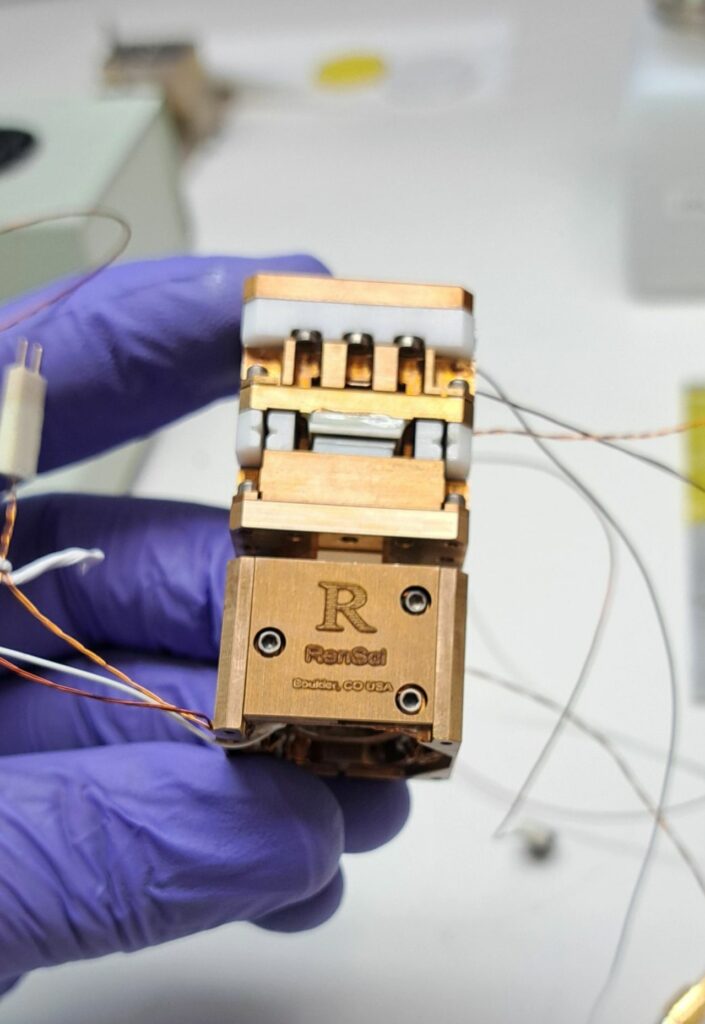

Low temperature positioning is a key enabling technology for quantum materials and devices experiments, because quantum states are only accessible and controllable when the thermal energy is smaller than the energy difference between the quantum states.
Here are the 2 main sources of heat dissipation in cryogenic nanopositioning stages and scanners, can you find their common denominator?
🔷𝗝𝗼𝘂𝗹𝗲 𝗛𝗲𝗮𝘁𝗶𝗻𝗴 𝗶𝗻 𝗘𝗹𝗲𝗰𝘁𝗿𝗶𝗰𝗮𝗹 𝗖𝗼𝗺𝗽𝗼𝗻𝗲𝗻𝘁𝘀 : PJ=I^2.R I is the drive current, which depends closely on C, the piezo motors 𝗰𝗮𝗽𝗮𝗰𝗶𝘁𝗮𝗻𝗰𝗲.
🔷𝗗𝗶𝗲𝗹𝗲𝗰𝘁𝗿𝗶𝗰 𝗟𝗼𝘀𝘀𝗲𝘀 𝗶𝗻 𝗣𝗶𝗲𝘇𝗼𝗲𝗹𝗲𝗰𝘁𝗿𝗶𝗰 𝗔𝗰𝘁𝘂𝗮𝘁𝗼𝗿𝘀: It refers to the energy dissipated as heat when an alternating electric field is applied to the piezoelectric actuators. A piezo with a higher 𝗰𝗮𝗽𝗮𝗰𝗶𝘁𝗮𝗻𝗰𝗲 store and dissipates more energy in the form of heat.
Motors from historical suppliers run low voltages and high currents resulting from high-capacitance piezo motors ☀️ . This choice stems from the adaptation of room-temperature positioners to cryogenic applications, mainly by adapting materials.
From the outset, Renaissance Scientific has focused exclusively on very low-temperature applications, and has made the right technological choice:
Ryan Murdick chose to do the opposite of what common manufacturers do, he designs piezos with 1000 times lower capacitance, enabling the use of very low currents and higher voltages.
let’s calculate! 👨🎓
Compare a typical leading vendor scenario, 60 V, 1 kHz, 5 uF, so the power pumped into that capacitor is CV^2/2 times frequency which is ~ 𝟵𝗪. The analogous situation for ren-Sci motors is 200 V, 1 kHz, 5 nF, which is 𝟬.𝟭 𝗪, so using 90x less energy to get the same motion (and thus 90x less heat dissipation).
It sounds simple, but it took engineering genius, were carefully engineered with extreme attention to thermal contraction, capacitance losses in cryo, minimal friction at the bearing interfaces, and low current operation as described above.
Renaissance Scientific has literally solved a recurring problem for scientists, and now it’s Qnity‘s turn to spread the word.
There’s a lot of work to be done, as it seems that some people are still buying other positioners for their low temperature setup ⏰ 😉



